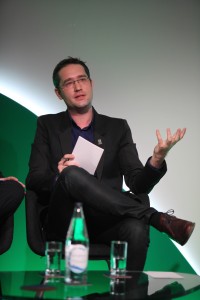
“Imagine a sports car designed to travel at high speed on paved highways, running on a gravel road. It’s going to break down, isn’t it? The same thing happens when agricultural technologies are applied without using smart agronomy to increase input use efficiency, protect the environment and ensure sustainability,” said Bram Govaerts, Leader of CIMMYT’s program on Sustainable Intensification in Latin America.
Govaerts presented at a keynote speech titled “Ending hunger: Can we achieve humanity’s elusive goal by 2050?” at the Oxford Farming Conference (OFC) of the University of Oxford, Oxford, United Kingdom, on 5-7 January. The conference has been held in Oxford for more than 70 years with the aim of contributing to the improvement and welfare of British agriculture. Farmers, researchers, politicians and economists from across the world attend the event. This year, the main theme was “Daring Agriculture,” including such subjects as global agriculture, innovation, sustainable intensification, technology and agribusiness.
As evidenced during the event, there are many challenges in agriculture. We need to produce more food with fewer resources and less environmental impact while reducing world hunger and poverty. In his speech, Govaerts highlighted the main challenges to achieving food security for a world population that is projected to reach nearly ten billion by 2050. These challenges include the growing demand for food, demographic changes and the impacts on agriculture of weather events such as El Niño. Govaerts also mentioned CIMMYT’s efforts aimed at fighting world hunger and how initiatives such as MasAgro are taking science to the farm.
“It was very exciting to talk about the sustainable strategies we’re working on with farmers, technicians, scientists, institutions and partners to be able to produce more with fewer resources and, especially, to produce intelligently by adapting technologies to the needs of farmers, by developing machine prototypes and by using appropriate varieties and post-harvest practices,” said Govaerts.
To see the presentation, click here.
 Nutrition, health and food security
Nutrition, health and food security 
